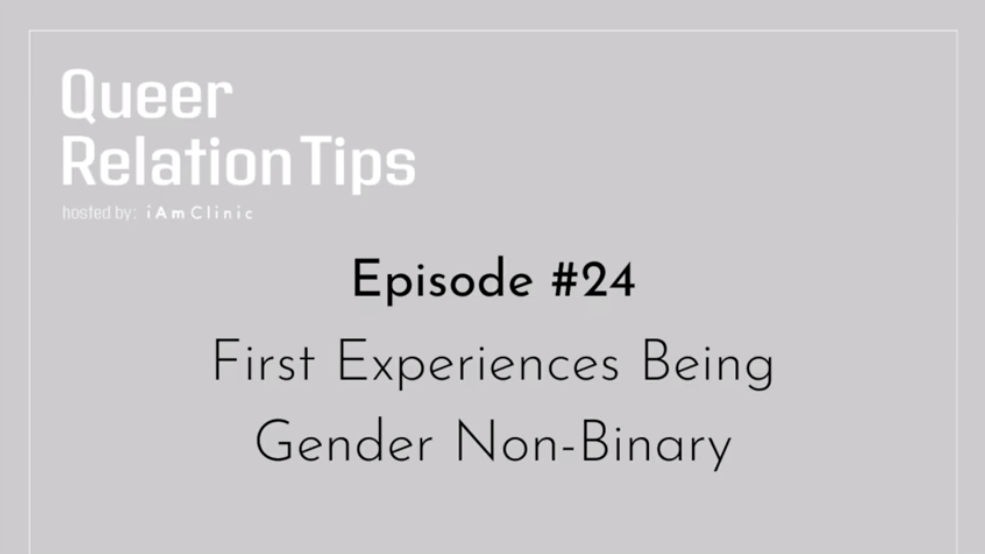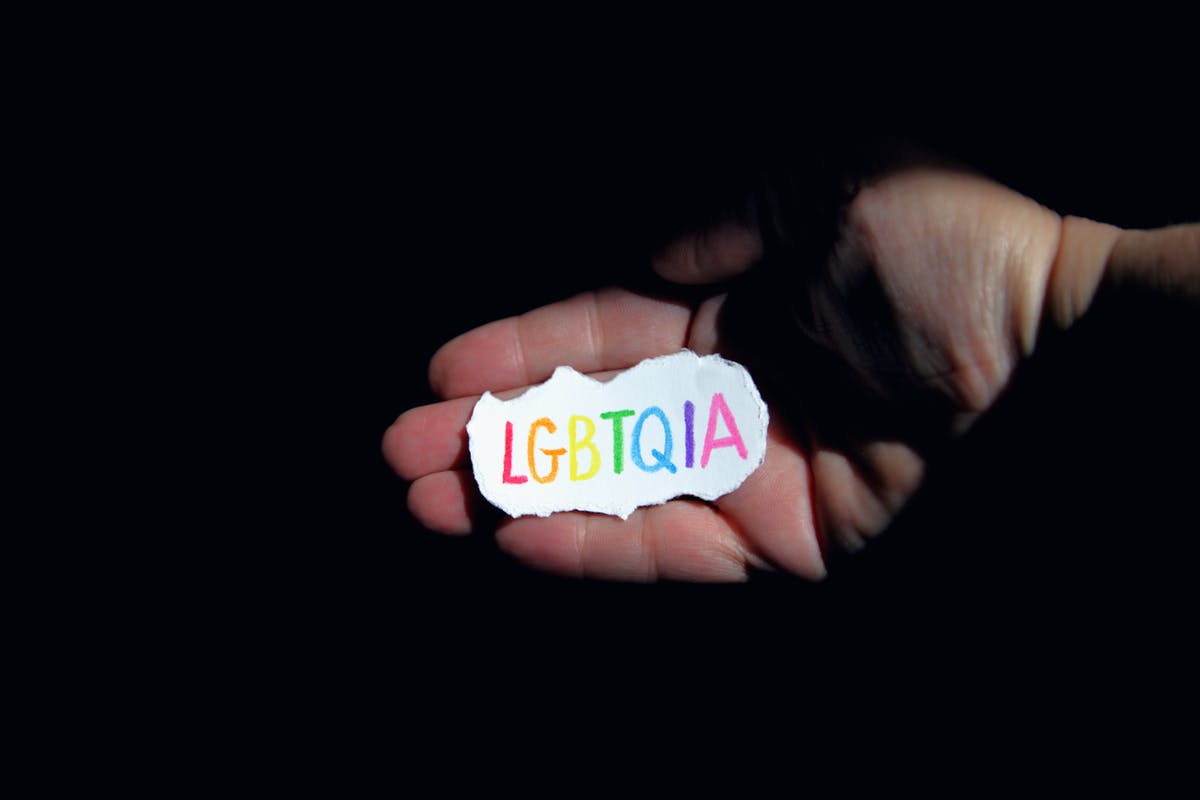Contents
Jump To:
1. What Does Genderfluid Mean?
2. What It Means To Be Genderfluid?
3. Gender Identity | Gender Expression | Sexual Identity
4. Common Questions
What It Means To Be Genderfluid
As with all things gender related, the term genderfluid may mean something a little different to everyone.
Why is this?
Gender itself means something different to everyone, because each person has a unique experience of gender. For some, it’s an inner feeling. For others, it’s much more of a physical experience. Not to mention that gender identity and gender expression are separate aspects of gender that may or may not be the same.
Definitions and Terminology
Here are some key gender identity terms:
- Genderfluid: A person whose gender identity shifts between male, female, both, or neither. Their gender expression may also be fluid.
- Non-binary: An umbrella term for those whose gender identity falls outside the gender binary of male/female. Genderfluid falls under this umbrella.
- Genderqueer: Similar to non-binary, this describes a gender identity other than man or woman. Some genderfluid folks identify as genderqueer.
- Gender expression: How someone externally presents their gender through behavior, style, etc. This can be fluid for genderfluid people.
- Gender identity: Someone’s internal sense of their own gender. Genderfluid people experience shifts in their gender identity.
History of Gender Fluidity
While gender fluidity has gained more visibility recently, it’s not a completely new concept. Many cultures have long acknowledged identities outside the Western male/female binary. Examples include Two-Spirit people in some Indigenous tribes, and hijras in South Asia. However, colonization and Westernization suppressed many of these identities. The term genderfluid originated in trans communities online in the 90s/early 2000s. Gender diversity is becoming more widely understood and accepted today. Find the LGBTQIA+ therapists in Denver?
What Does Genderfluid Mean?
According to the Oxford and Merriam-Webster dictionaries, identifying as genderfluid means your gender identity is not fixed; it’s capable of changing over time. The very definition lends itself to various interpretations. Some sources include shifting from male to female given your mood in their definitions, while others state that it’s the feeling of being both male and female. A genderfluid individual has the potential to identify as male, female, both or neither on any given day.
Genderfluidity doesn’t necessarily have a fixed point on the gender spectrum, as by its very definition, it’s fluid. It fluctuates and has its own spectrum. An individual may feel 10% female and 90% male, or 40% male and 60% female, or any range in between. Leaning one way or another, shifting along the spectrum, or having a unchanging experience of gender does not make a genderfluid identity any less valid.
Discussing Gender Fluidity with Loved Ones
Coming out as genderfluid can be difficult if friends and family lack understanding. Be patient, educate them, and provide resources to support them. If they use the wrong pronouns, gently correct them. Help them separate their preconceptions of gender from your lived experience. Remind them that you are still you, regardless of how your gender identity shifts. Give them time to adjust. Having ongoing open conversations can help. If issues persist, seek support.
Navigating Pronouns
Many genderfluid people use shifting pronouns, alternating between he/him, she/her, they/them, etc. When first meeting someone, share your current pronouns. On days when your pronouns change, inform those in your life. Gently correct anyone who misgenders you. Carrying a badge or card with your pronouns can help prompt correct usage by others. practicing using your own pronouns can help your mental transition.
Scientific Research and Data
While gender identity research is still evolving, some key findings include:
- Data indicates gender fluidity is not just a phase. One study found over 80% of genderfluid youth still identified as gender diverse years later.
- MRI scans show genderfluid individuals exhibit neural activity aligning with their expressed gender, rather than their sex assigned at birth. This adds biological evidence that gender exists on a spectrum.
- A UCLA study found up to 27% of youth identify as gender diverse in some capacity, indicating higher prevalence than previously assumed.
Gender Identity | Gender Expression | Sexual Identity
These three aspects of who someone is—gender identity, gender expression and sexual identity—often cause confusion for those who aren’t really sure what each one means. Let’s remedy that.
Gender identity is your personal sense of gender. For example, as a genderfluid person, sometimes I feel female, other times I feel male, and sometimes I feel like I’m neither. My personal experience with being genderfluid means not experiencing my gender as static.
Gender expression is how you express your gender identity. This can be done through your appearance, such as with clothing choices, or even through behaviors. Identity and expression are commonly confused, largely due to stereotypes or societal expectations. For example, identifying as genderfluid comes with an expectation of presenting masculine and feminine at separate times, but these are two different things, and a genderfluid person may or may not wish to vary their gender expression.
Give yourself permission to express your chosen gender in any way YOU see fit. Explore what identity and expression mean to you, and then go for it. Be who you feel you are in whatever way feels most natural to you.
Finally, sexual identity is often confused with gender identity; however, they are not the same thing. Sexual orientation is tied to the gender of who you are or are not attracted to, romantically interested in, or want to have sexual experiences with (if you experience romantic feelings), while gender identity is your personal experience of gender. This means someone can be genderfluid and straight, bisexual, or any other sexual orientation that is congurent with their internal experiences.
Practical Tips for Genderfluid Individuals
- Experiment with your gender expression through clothing, accessories, grooming, mannerisms, etc. Find what makes you feel most aligned.
- Seek out genderfluid and LGBTQ+ online communities to find support and resources. Connecting with those with similar experiences can help.
- Consider coming out to close friends and family. This can allow more flexibility in safely expressing your gender. Provide educational resources to facilitate their understanding.
- Try new gender-affirming names or pronouns privately at first to see what feels most suitable before asking others to use them.
- Set boundaries if you feel pressured to identify a certain way by others. Your gender is defined by you alone.
Common Misconceptions
Some common myths about gender fluidity include:
- It’s a trend or “fad” – No, gender fluidity has likely always existed, only the terminology is new.
- Genderfluid people are confused or going through a phase – Not true, genderfluidity reflects diverse gender experiences.
- Physical appearance dictates gender identity – Gender expression can align with identity but does not define it.
Common Questions
Are you male or female?
Simple answer? Yes. Identifying as genderfluid means embracing being both male and female, either somewhere on a spectrum or separately at different times. There isn’t a right or wrong way to experience genderfluidity. It’s unique to each person.
What does Mx stand for?
When I began to embrace my identity as a genderfluid person, I was asked this quite frequently. Mx is the gender neutral equivalent to Mr., Ms. or Mrs. Unlike the gendered salutations, Mx leaves space for being male, female, both, neither or anything along the gender spectrum. This term is not exclusive to genderfluid individuals.
How is genderfluid different from nonbinary?
Nonbinary is considered an umbrella term for various nonconforming identities, including genderfluid, genderqueer, agender, and others. As an identity, nonbinary simply refers to someone who doesn’t identify with the previously used gender binary (male/female). It is possible for a genderfluid person to also identify as being nonbinary.
Do genderfluid individuals experience gender or body dysphoria?
Maybe. There isn’t a clear cut yes or no to this question. Some people may experience varying degrees of dysphoria, while others may not. People often have an image in their mind of what they “should” or want to look like, and when reality doesn’t match that image, dysphoria can occur. Stereotypes, societal or cultural expectations, peer or personal pressure, and hormones can all impact the presence or intensity of gender and/or body dysphoria.
What is it like being genderfluid?
Again, there’s no single answer to this question. It’s an incredibly personal experience. Personally, being genderfluid offers me a sense of freedom. I don’t have to fit in a box, meeting expectations or definitions created by other people in an effort to define who I am. It’s flexible. I can wake up each morning and express myself however feels accurate for me that day.




